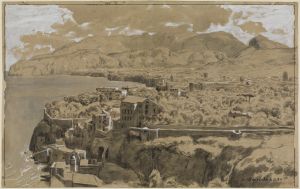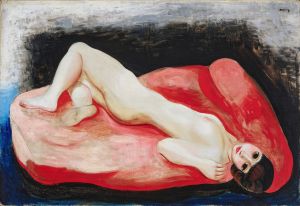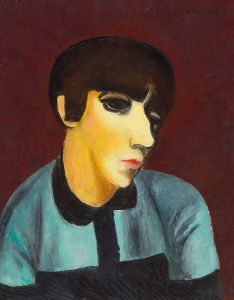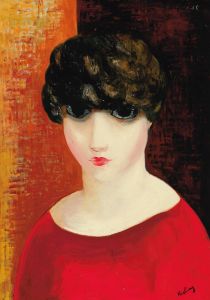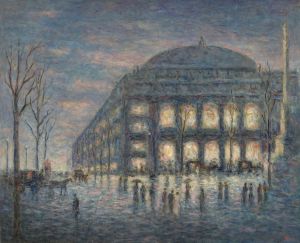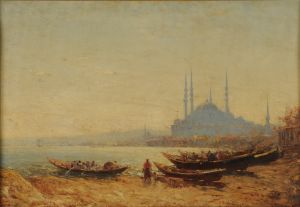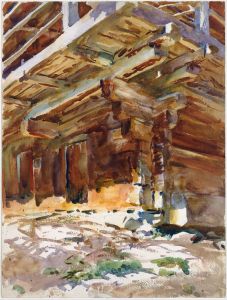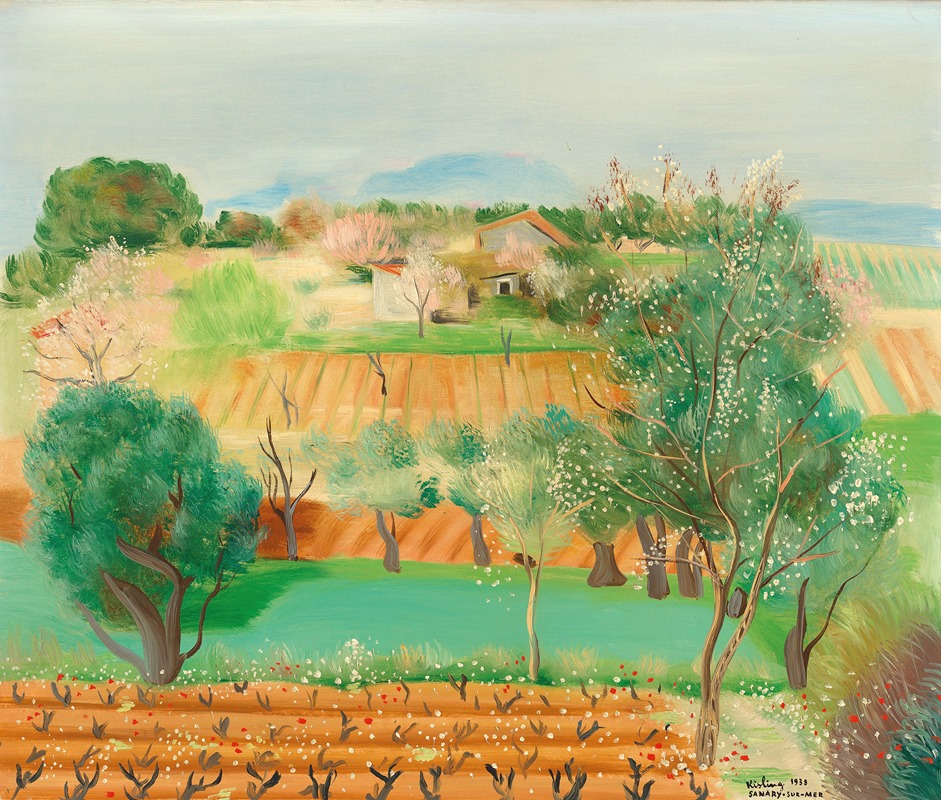
Sanary
A hand-painted replica of Moïse Kisling’s masterpiece Sanary, meticulously crafted by professional artists to capture the true essence of the original. Each piece is created with museum-quality canvas and rare mineral pigments, carefully painted by experienced artists with delicate brushstrokes and rich, layered colors to perfectly recreate the texture of the original artwork. Unlike machine-printed reproductions, this hand-painted version brings the painting to life, infused with the artist’s emotions and skill in every stroke. Whether for personal collection or home decoration, it instantly elevates the artistic atmosphere of any space.
Sanary by Moïse Kisling is a notable painting created by the Polish-born French artist Moïse Kisling. Kisling, born on January 22, 1891, in Kraków, Poland, was a prominent figure in the early 20th-century art scene, particularly known for his contributions to the School of Paris. He moved to Paris in 1910, where he became associated with other avant-garde artists such as Amedeo Modigliani, Marc Chagall, and Jules Pascin.
The painting "Sanary" depicts the picturesque coastal town of Sanary-sur-Mer, located in the Provence-Alpes-Côte d'Azur region in southeastern France. This town, known for its scenic beauty and Mediterranean charm, has historically been a haven for artists and writers. Kisling's depiction of Sanary captures the essence of the town's vibrant atmosphere and its serene coastal landscape.
Kisling's style is characterized by a blend of realism and modernism, often incorporating bold colors and expressive forms. In "Sanary," these elements are evident in the way he portrays the town's architecture, the shimmering sea, and the lush vegetation. The painting reflects Kisling's keen eye for detail and his ability to convey the unique ambiance of the location.
Throughout his career, Kisling was known for his versatility, producing portraits, landscapes, and still lifes. His works often featured a distinctive use of color and a strong sense of composition. "Sanary" is a testament to his skill in capturing the essence of a place, making it a significant piece within his body of work.
Kisling's time in Sanary-sur-Mer was part of a broader trend among artists and intellectuals who sought refuge in the south of France during the interwar period. The town became a cultural hub, attracting figures such as Aldous Huxley, Thomas Mann, and Bertolt Brecht. Kisling's connection to this community of expatriates and creatives further underscores the cultural significance of "Sanary."
In addition to his artistic achievements, Kisling's life was marked by his experiences during both World Wars. He served in the French Foreign Legion during World War I and later became a French citizen. During World War II, as a Jew, he faced persecution under the Vichy regime and eventually fled to the United States, where he continued to work and exhibit his art.
"Sanary" remains an important work within Kisling's oeuvre, reflecting both his personal experiences and the broader cultural movements of his time. The painting is a vivid representation of the idyllic coastal town and serves as a reminder of the rich artistic heritage of the early 20th century.
Kisling passed away on April 29, 1953, in Sanary-sur-Mer, leaving behind a legacy of influential and evocative artworks. His contributions to the School of Paris and his unique artistic vision continue to be celebrated and studied by art enthusiasts and scholars worldwide.





